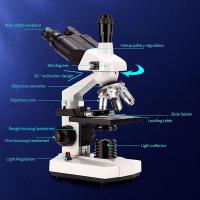Are There Microscopic Bugs On Your Face ?
Yes, there are microscopic bugs on your face. These tiny creatures are known as Demodex mites, and they live in the hair follicles and oil glands of human skin. While they are generally harmless, they can sometimes cause skin irritation or inflammation. It is estimated that nearly everyone has these mites on their face, but they are usually not visible to the naked eye.
1、 Demodex mites
Yes, there are microscopic bugs on your face called Demodex mites. These mites are a type of arachnid that live in the hair follicles and sebaceous glands of humans and other mammals. They are typically harmless and most people have them without even realizing it.
Recent research has shown that Demodex mites may play a role in certain skin conditions such as rosacea and acne. It is believed that the mites may trigger an immune response in some individuals, leading to inflammation and other symptoms.
While Demodex mites are a natural part of the human microbiome, they can become problematic in certain situations. For example, individuals with weakened immune systems may be more susceptible to Demodex infestations. Additionally, poor hygiene and certain cosmetic products may contribute to an overgrowth of mites.
Overall, it is important to maintain good hygiene and avoid sharing personal items such as towels and pillowcases to minimize the risk of Demodex infestations. If you are experiencing symptoms such as redness, itching, or inflammation, it is important to consult with a healthcare professional to determine the underlying cause and appropriate treatment.
2、 Skin microbiome
The skin microbiome refers to the diverse community of microorganisms that live on the surface of our skin. These microorganisms include bacteria, fungi, viruses, and other microbes. While it may sound unsettling, the truth is that our skin is home to trillions of microorganisms, and they play an important role in maintaining the health of our skin.
Recent research has shown that the skin microbiome is a complex ecosystem that is unique to each individual. The composition of the skin microbiome can be influenced by a variety of factors, including genetics, age, diet, and environmental factors such as exposure to UV radiation and pollution.
While there are certainly microscopic bugs on our skin, the vast majority of them are harmless or even beneficial. In fact, some of the microorganisms that live on our skin can help to protect us from harmful pathogens and maintain the health of our skin.
Of course, there are also some microorganisms that can cause skin infections or other problems. However, these are relatively rare, and most people are able to maintain a healthy balance of microorganisms on their skin without any issues.
Overall, the skin microbiome is a fascinating and complex topic that is still being studied by scientists around the world. While there is still much to learn about this important ecosystem, it is clear that the microorganisms that live on our skin play a crucial role in maintaining our overall health and well-being.
3、 Acne-causing bacteria
Acne is a common skin condition that affects millions of people worldwide. While there are several factors that contribute to the development of acne, one of the most significant is the presence of acne-causing bacteria on the skin. These bacteria, known as Propionibacterium acnes, thrive in the hair follicles and sebaceous glands of the skin, where they feed on sebum and dead skin cells.
Recent research has shown that there are also microscopic bugs on our face, known as Demodex mites, that can contribute to the development of acne. These mites live in the hair follicles and sebaceous glands of the skin, where they feed on sebum and other skin oils. While they are a natural part of the skin's microbiome, an overgrowth of Demodex mites can lead to inflammation and irritation, which can trigger acne breakouts.
However, it is important to note that not all acne is caused by bacteria or mites. Hormonal imbalances, genetics, and lifestyle factors such as diet and stress can also play a role in the development of acne. Therefore, it is essential to take a holistic approach to acne treatment, addressing all of the underlying factors that contribute to the condition.
In conclusion, while acne-causing bacteria and microscopic bugs on the face can contribute to the development of acne, they are not the only factors at play. A comprehensive approach to acne treatment, including proper skincare, a healthy diet, and stress management, is essential for achieving clear, healthy skin.
4、 Fungal infections
Are there microscopic bugs on your face?
Yes, there are microscopic bugs that live on our skin, including our face. The most common type of microscopic bug on our face is a type of mite called Demodex. These mites are usually harmless and we all have them naturally living on our skin. In fact, studies have shown that nearly 100% of people over the age of 18 have Demodex mites on their face, although they are typically present in very small numbers. However, some people may have a higher population of Demodex mites on their face, which could lead to skin sensitivity and irritation. It has also been suggested that an abundance of Demodex mites may be linked to certain skin conditions, such as rosacea.
On the other hand, fungal infections on the face are caused by an overgrowth of fungi that are naturally present on our skin. These types of infections can occur in any area on the face where moisture is present, such as around the nose or mouth. Fungal infections can be uncomfortable and unsightly, but they are usually treatable with over-the-counter or prescription antifungal medications.
Overall, while microscopic bugs and fungal infections can both potentially exist on our faces, they are usually harmless and easily treatable. Maintaining good hygiene practices, such as washing your face regularly and avoiding sharing personal items, can help prevent the spread of these types of skin conditions.





































